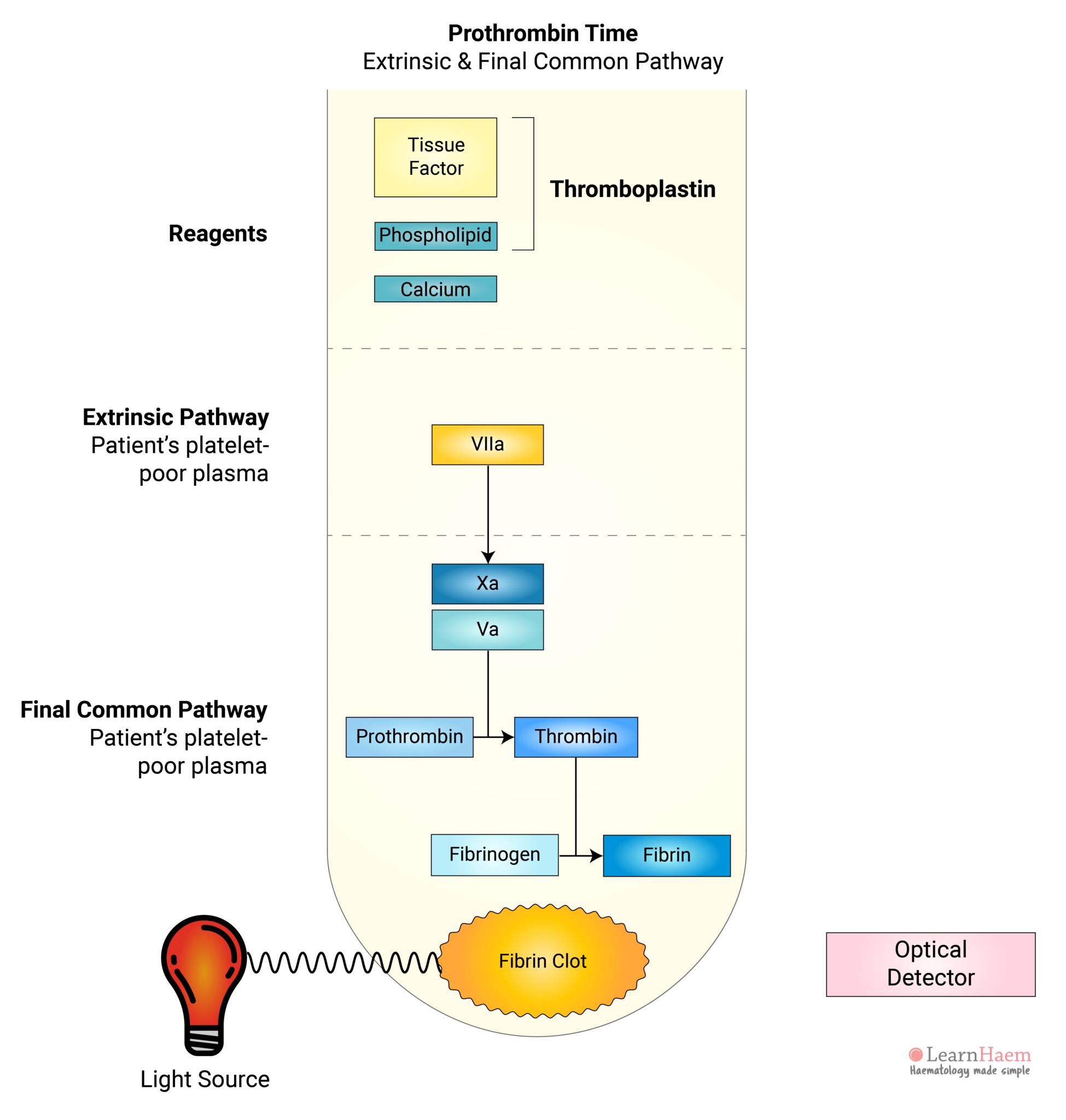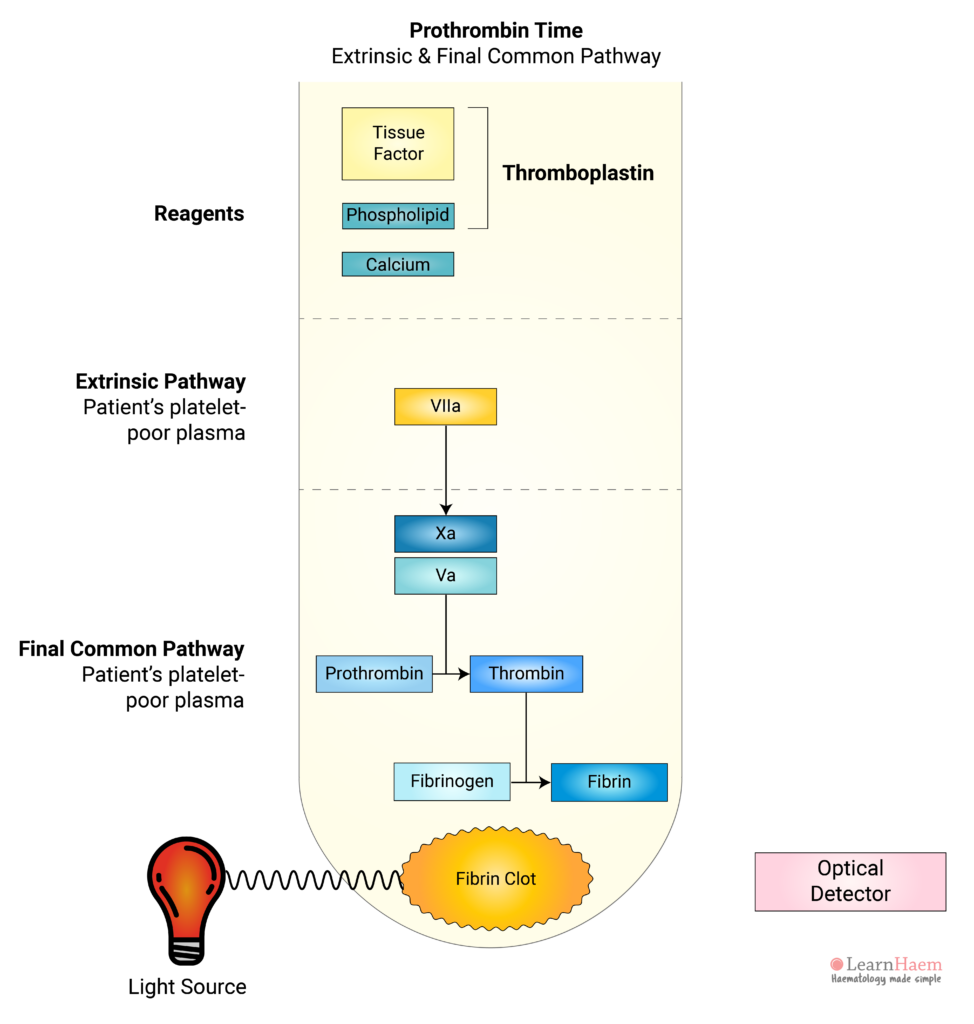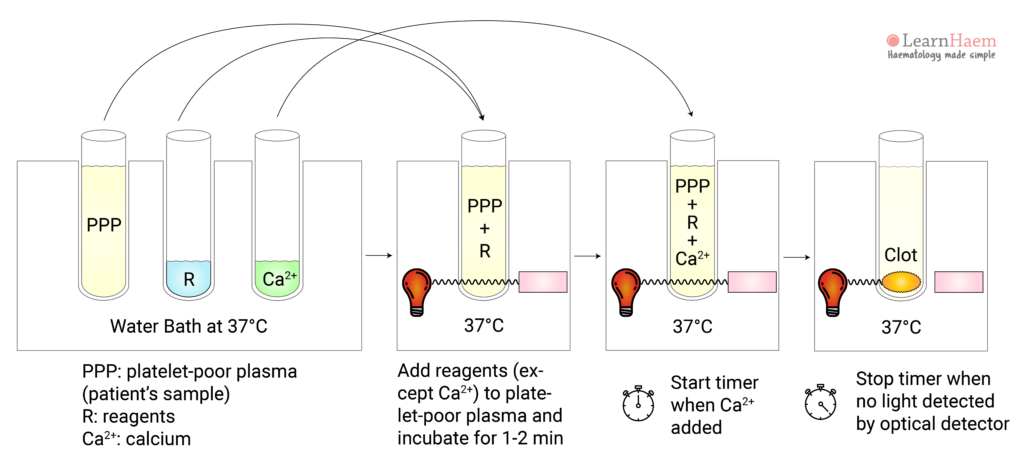The PT assay is a basic coagulation tests which is sensitive to factor deficiencies and inhibitors of the extrinsic and final common pathways.
Reagents include thromboplastin (a combination of tissue factor and phospholipid) and calcium.
As factor VII is the only factor in the extrinsic pathway, and isolated prolonged PT is indicative of a factor VII deficiency or an inhibitor against factor VII.
International Sensitivity Index (ISI) and International Normalised Ratio (INR)
The ISI is the gradient of the graph obtained when the PTs of a reference thromboplastin are plotted against a test thromboplastin on a log scale. This requires 20 normal patients and 60 patients who have been stable on anticoagulation for at least 6 months.

How The Tests is Performed
The APTT and PT assays work on the principle that plasma is fluid and translucent, while a clot is firm and opaque. There are variations on the assay which involve light transmittance and motion detection. The version described here involves light transmittance.
Patient platelet-poor plasma (PPP), reagents (R, thromboplastin for the PT) and calcium are incubated separately at 37°C.
The reagents are then added to platelet-poor plasma at allowed to equilibrate at 37°C.
Calcium is then added, which marks the point where timing starts.
A light source and optical detector are used to determine when a clot forms. Prior to the addition of calcium, there is no activation of the clotting cascade. Light hence passes freely through the sample and is detected by the optical detector.
However, after calcium is added, the clotting cascade is activated and a clot forms. The clot is opaque, absorbing light and blocking its transmission to the optical detector. At this point, the timer is stopped.
The time taken for the clot to form, in seconds, is the PT.




Leave A Comment